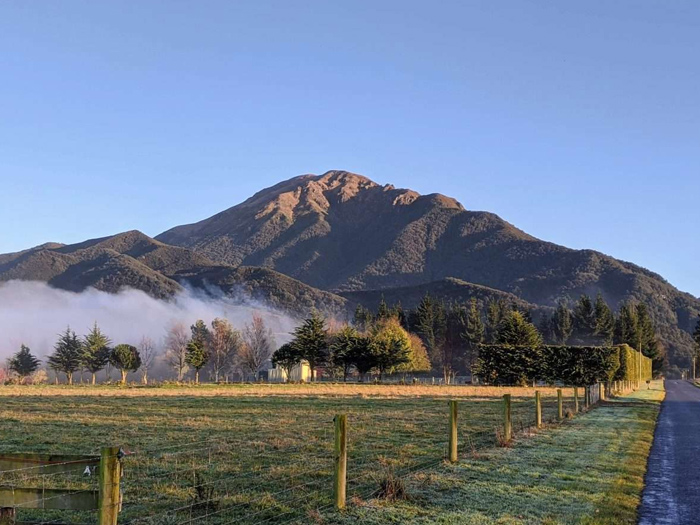The STAVELEY Boutique Lodge
Nestled in the foothills of the Southern Alps and only an hour’s drive from Christchurch International Airport; The STAVELEY is a truly unique property offering a private space to relax, unwind and socialise.

LOCATION
Located on the Inland Scenic Route 72, this little township has many of its own attractions like The Staveley Store known for its fabulous local produce, coffee and giftwares, the open-air Staveley Ice Rink just two minutes up the road and the Mt Somers Walking Track. Mt Hutt Ski Area & Mountain Bike Park, Opuke Thermal Pools & Spa are located in Methven, just a 15-minute drive away.

BUILD
The Dutch American barn-style building was built 27 years ago in 1995 by Avrill & Bruce Head. ‘Korobahn’ as it was known translates to corrugated barn and was built for the purpose of a retreat for stressed city folk!
From the colonial windows to exposed rafters, the rustic barn-style kitchen with classic cast iron stove, bullnose verandah and double open fireplace, we wouldn’t blame you for wanting to move here permanently.
“For stressed city inmates wanting to dip their toes in the soothing atmosphere of the country” A Head

OUT BUILDINGS
The property boasts a 240sqm (12mx24m) events shed, all-weather horse arena, three-bay hay shed, a wooden slat rustic tack shed, small stockyards and 15 acres of fertile paddocks that have been used for grazing horses and cattle. The paddocks have also produced over 700 bales of hay per annum.
The BARN has hosted many events including weddings, concerts and dinners. It has removable sides on all sides, a capacity to cater for up to 150 people and has been superbly located to take in a direct view of Mt. Somers.

CAST IRON STOVE
The traditional cast iron stove has the ability to deliver excellent and even heat distribution. This was of paramount importance during the construction of our building, with it being a generous size and the location in the South Island known for its cold periods. Cast iron stoves are robust, attractive and will give years of service.
Developed by foundryman Henry Shacklock in the 1870s in his Dunedin workshop, remained in production almost unchanged until the 1930s. There were no gauges to measure the cooking temperature, which could only be adjusted by altering the fuel in the firebox.










